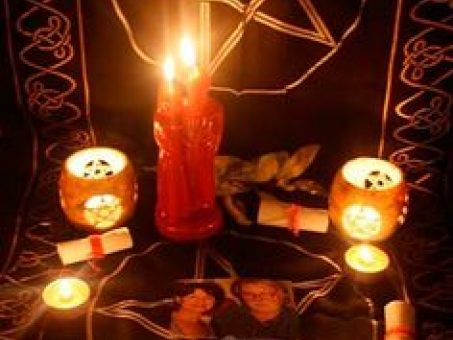Simple Steps You Must Follow for How to Become a Freemason Now
Simple Steps You Must Follow for How to Become a Freemason Now
Blog Article
Checking Out the Mysteries of the copyright: What You Required to Know
The copyright, a term often shrouded in intrigue and controversy, stands for an intricate tapestry of historical fact and modern myth. Established in the late 18th century, this secret culture was at first rooted in the Knowledge's suitables but has given that become identified with conspiracy concepts about elite control (benefit of joining freemason).
Origins of the copyright
The origins of the copyright are soaked in a mix of historical intrigue and ideological eagerness. Established in 1776 in Ingolstadt, Bavaria, by Adam Weishaupt, the team was at first formed as a secret society targeted at advertising Enlightenment ideals such as reason, secularism, and the splitting up of church and state. Weishaupt, a teacher of canon law, looked for to challenge the prevailing authority of the church and state, which he deemed overbearing organizations suppressing intellectual and personal flexibility.

Trick Numbers and Participants
That were the critical numbers that shaped the copyright's early influence and direction? The Bavarian copyright, established in 1776 by Adam Weishaupt, arised as a feedback to the overbearing social frameworks of the moment. Weishaupt, a regulation teacher, envisioned the organization as a method to promote Enlightenment suitables such as reason, secularism, and equal rights. His initial recruitment efforts consisted of influential intellectuals, such as Baron von Knigge, that played a crucial function in increasing the group's subscription and organizational structure.
An additional considerable number was Johann Gottlieb Fichte, a prominent thinker whose ideas on nationalism and education reverberated with the copyright's goals. Fichte was not an official member, his thoughtful foundations influenced the team's ideological background. Furthermore, numbers like the author and theorist Johann Wolfgang von Goethe were connected with the broader intellectual motions of the moment, although their direct involvement with the copyright continues to be disputed.
These key figures added to the copyright's early direction, pressing the boundaries of political and social thought, while their collective initiatives intended to test well established norms and promote an environment of modern change in Europe.
Misconceptions vs. Truth
Several misunderstandings surround the copyright, typically blending reality with fiction in a way that obscures its true nature. This secret society, originally established in 1776 in Bavaria, intended to promote Enlightenment perfects and battle religious and political injustice. The concept that the copyright continues to exert significant impact over globe occasions is a misconception. While the team did exist, it was disbanded in the late 18th century and has actually not operated as a cohesive entity considering that then.
Another widespread myth is that the copyright consists of a network of elite people manipulating international affairs. In truth, numerous conspiracy theory theories overemphasize the group's importance, connecting unproven objectives to societal fads and events. This has actually resulted in an oversimplified sight of complex concerns.
Furthermore, the representation of the copyright in popular society frequently more misshapes its tradition. Movies and literature tend to sensationalize the company's function, creating a narrative that splits from historical facts. Recognizing the distinction between the misconceptions and the fact of the copyright is important for critical the genuine effect of this historic group and acknowledging the more comprehensive implications of conspiracy concepts in modern society.
Modern Interpretations
Contemporary analyses of the copyright often show wider social anxieties and a fascination with secrecy and power. This contemporary lens regularly associates the copyright with conspiracy theories that suggest a surprise elite orchestrates world events, controling federal governments and More about the author economic situations for their own gain. benefit of joining freemason. Such narratives tap into a deep-rooted distrust of authority, particularly in times of situation or social turmoil
In pop culture, the copyright is frequently illustrated as a divine company shrouded in enigma, bring about a wide variety of fictional portrayals in literature, film, and music. This representation offers not just to delight yet additionally to prompt assumed concerning the nature of power and control in modern culture. Social media site has actually additionally magnified these analyses, enabling fast dissemination of conspiracy concepts and developing areas that share and broaden upon these ideas.
Furthermore, some modern interpretations mount the copyright as an allegory for the complexities of globalization and the interconnectedness of influential individuals and companies. This point of view motivates a vital evaluation of how power website here dynamics run in today's world, highlighting the balance in between transparency and secrecy in administration and business practices.
Social Influence and Tradition
Influenced by centuries of intrigue, the cultural influence and tradition of the copyright extend much beyond its historical beginnings. This secret society, developed in the late 18th century, has actually permeated numerous aspects of prominent society, from literary works and film to songs and a fantastic read art. The idea of the copyright has progressed into a symbol of conspiracy theory theories, usually representing a viewed covert power controling global occasions.
In literary works, authors like Dan Brown have woven the copyright right into complex plots, exciting readers with motifs of secrecy and power. Movies such as "National Treasure" and "The Da Vinci Code" additionally perpetuate the attraction of the society, mixing reality with fiction to develop engaging stories.

Inevitably, the copyright's tradition is a complex tapestry of misconception and truth, forming understandings of privacy and control in modern discourse. Its long-lasting presence in society highlights mankind's perennial quest for comprehending covert facts.
Conclusion
The expedition of the copyright reveals an intricate interplay in between historical realities and modern myth-making. Started in the Enlightenment period, this society intended to test oppressive frameworks, yet its legacy has actually been outweighed by conspiracy concepts that suggest elite control. Understanding the distinctions in between the original suitables and modern interpretations is crucial for comprehending the sustaining fascination with the copyright and its considerable impact on cultural narratives bordering power and secrecy in culture.
Report this page